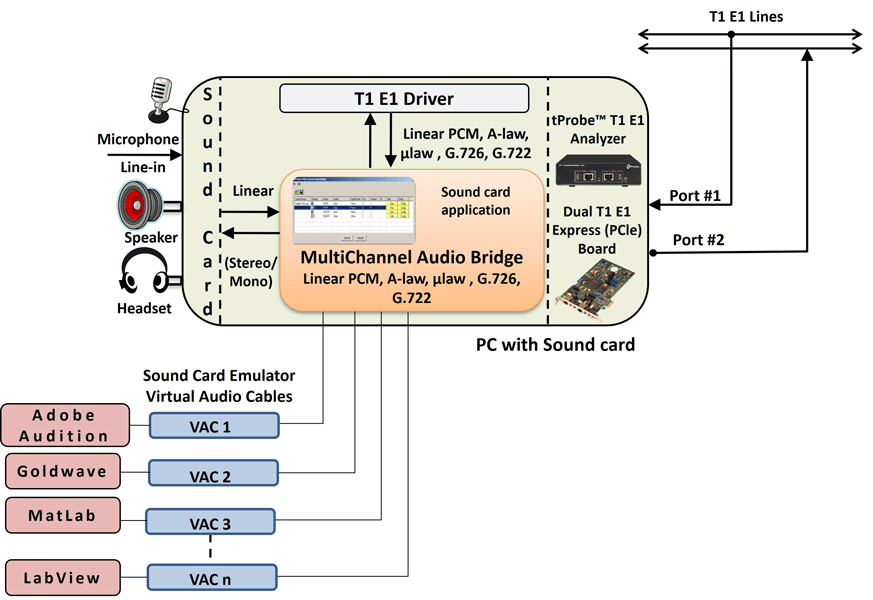Newsletter: GL Announces Real-Time Multi-Channel Audio Bridge
Welcome to another April 2010 issue of GL's Newsletter providing information and insight into our latest product Real-Time Multi-Channel Audio Bridge software.
Overview
The ability to send/receive from a sound card directly to T1 E1 timeslots is available once again for the latest HD cards, USB units and Universal Analyzers. It's called Real-Time Multi-Channel Audio Bridge. Listen to T1 E1 timeslots directly on your PC speaker or insert Microphone or Line In signals into T1 E1 timeslots.That's not all! This powerful optional application can also interwork with other "sound card aware" applications like Goldwave, Cool Edit, Adobe Audition, Audacity, Matlab, LabView and many others. In this case, third party "virtual sound card" software is required, e.g. VAC (Virtual Audio Cable).

Real-Time Multi-Channel Audio Bridge is an application that provides a bridge between T1 E1 timeslots and single or multichannel sound card(s). This allows users to insert speech onto T1 E1 timeslots using the PC microphone and listen to speech on T1 E1 timeslots using PC speakers or Headphones.
In addition, as shown in the diagram, linear PCM can be converted to G.726 (40 kbps, 32 kbps, 24 kbps, or 16 kbps) for direct insertion into T1 E1 timeslots, instead of the usual u-law or A-law.
Main Features
- Insert speech on T1 E1 lines using microphone connected to the sound card i.e., stream audio to channel/subchannel from the sound card
- Listen/Drop speech on T1 E1 lines using PC speakers or Headphone using sound card - Stream audio from channel/subchannel to sound card
- Supported codecs are A-law, Mu-law, 16 k Linear PCM, G.726 40 Kbps, 32 Kbps, 24 Kbps, and 16 Kbps data rates, G.722 (enhancement soon)
- Mono and Stereo audio modes supported
- Configure Drop and Insert, codec type, Mono/Stereo Audio Mode, port, Channel, Subchannel for a sound device
- Automatic detection of sound devices including Virtual Audio Cable (VAC)
Important Applications
- Audio editing applications like Gold Wave, Adobe Audition that normally send or receive audio streams to and from a sound card can be directed to timeslots on GL's T1 E1 cards
- Real-time transmit streaming from sound card and viewing of receiving stream
- Trouble shoot audio problems on T1 E1 timeslots
- Playback and record mono or stereo signals with audio editing applications directly from T1 E1
- Audio editing features/special effects such as noise reduction, delay, echo, fade, equalization can be performed with sound aware programs
- Supports non-contiguous timeslots for performing Drop and Insert actions
For comprehensive information on the product, please visit Real-time Multi-Channel Audio Bridge Webpage.
 Back to Latest News Page
Back to Latest News Page